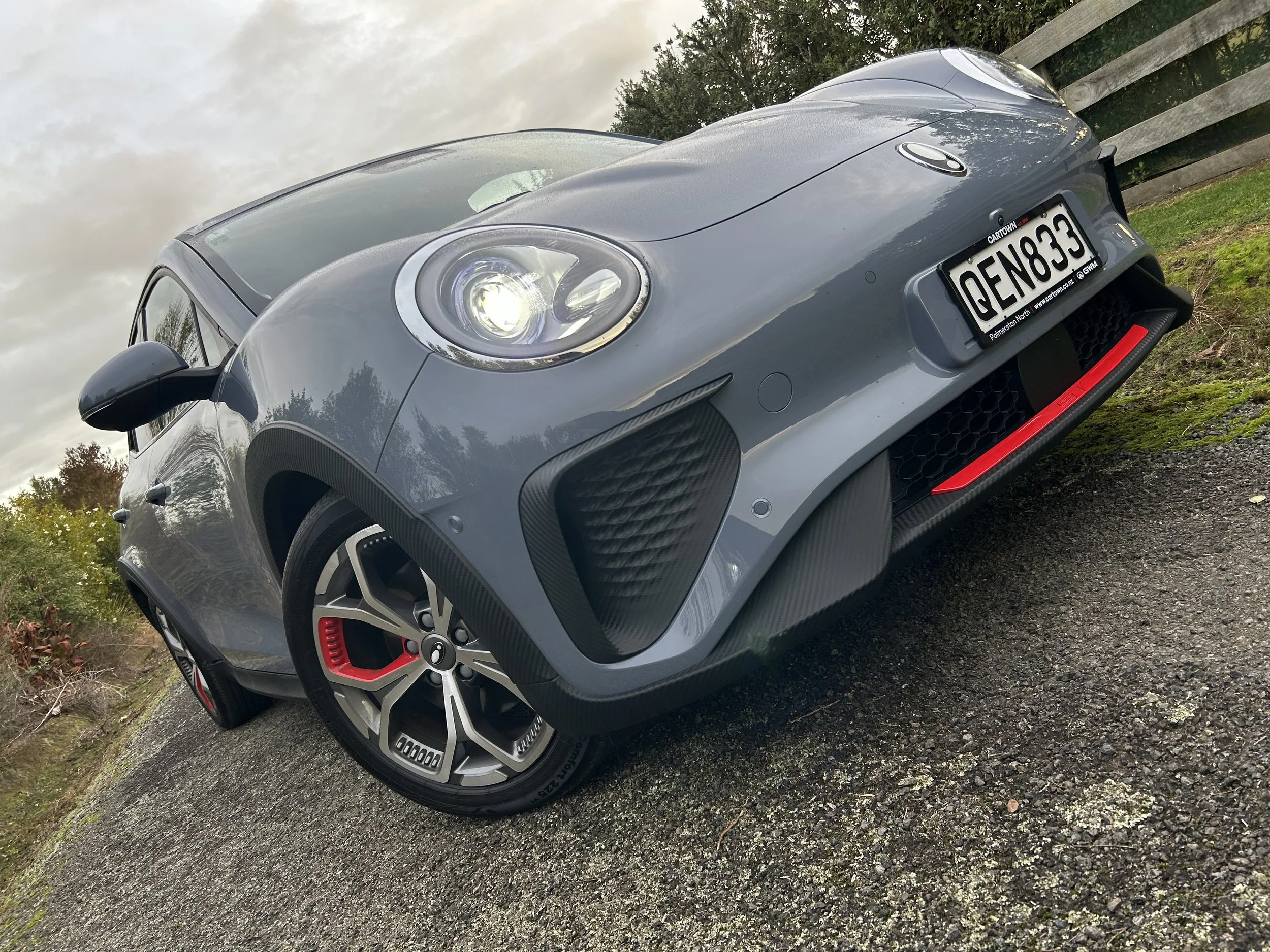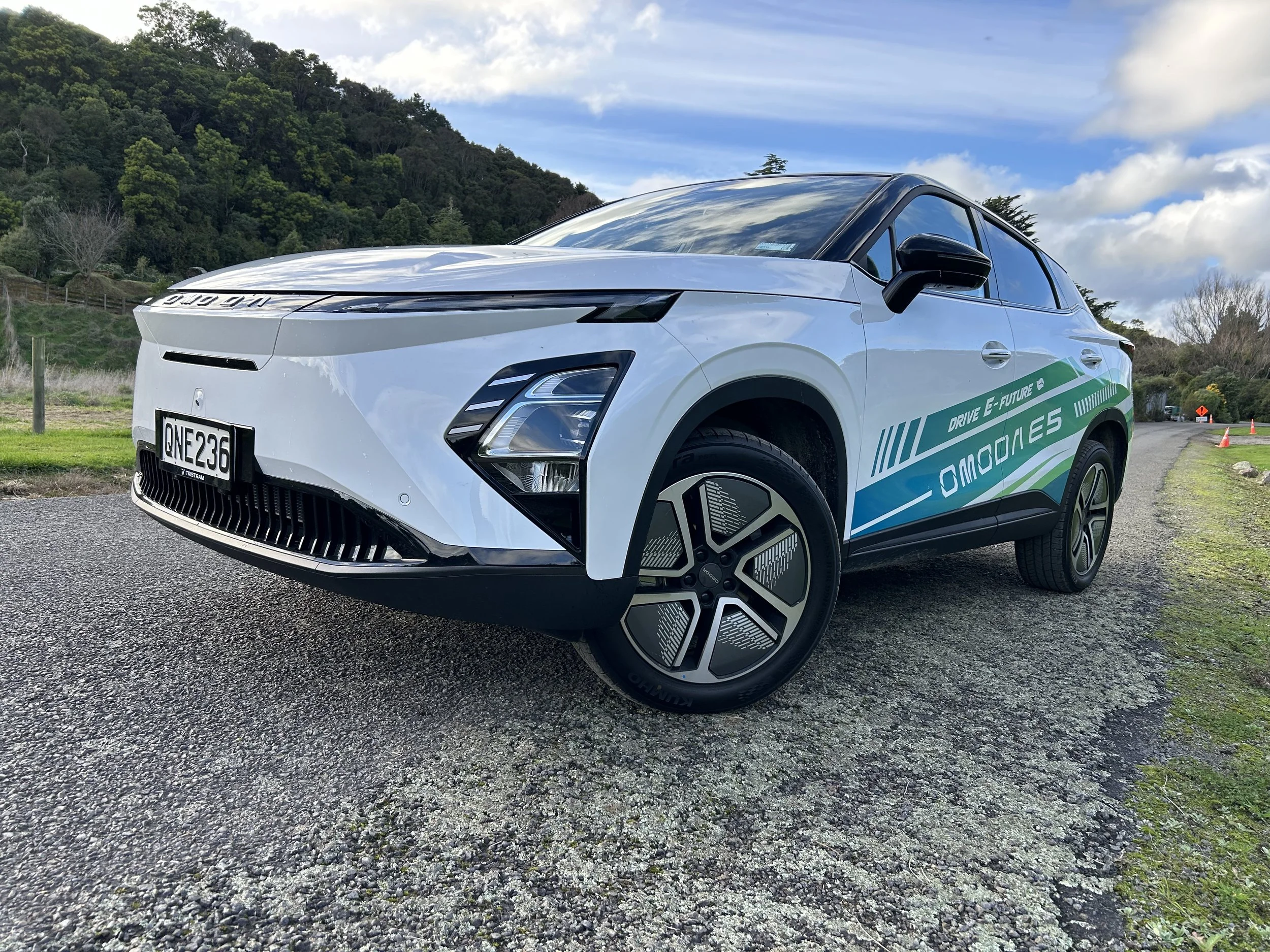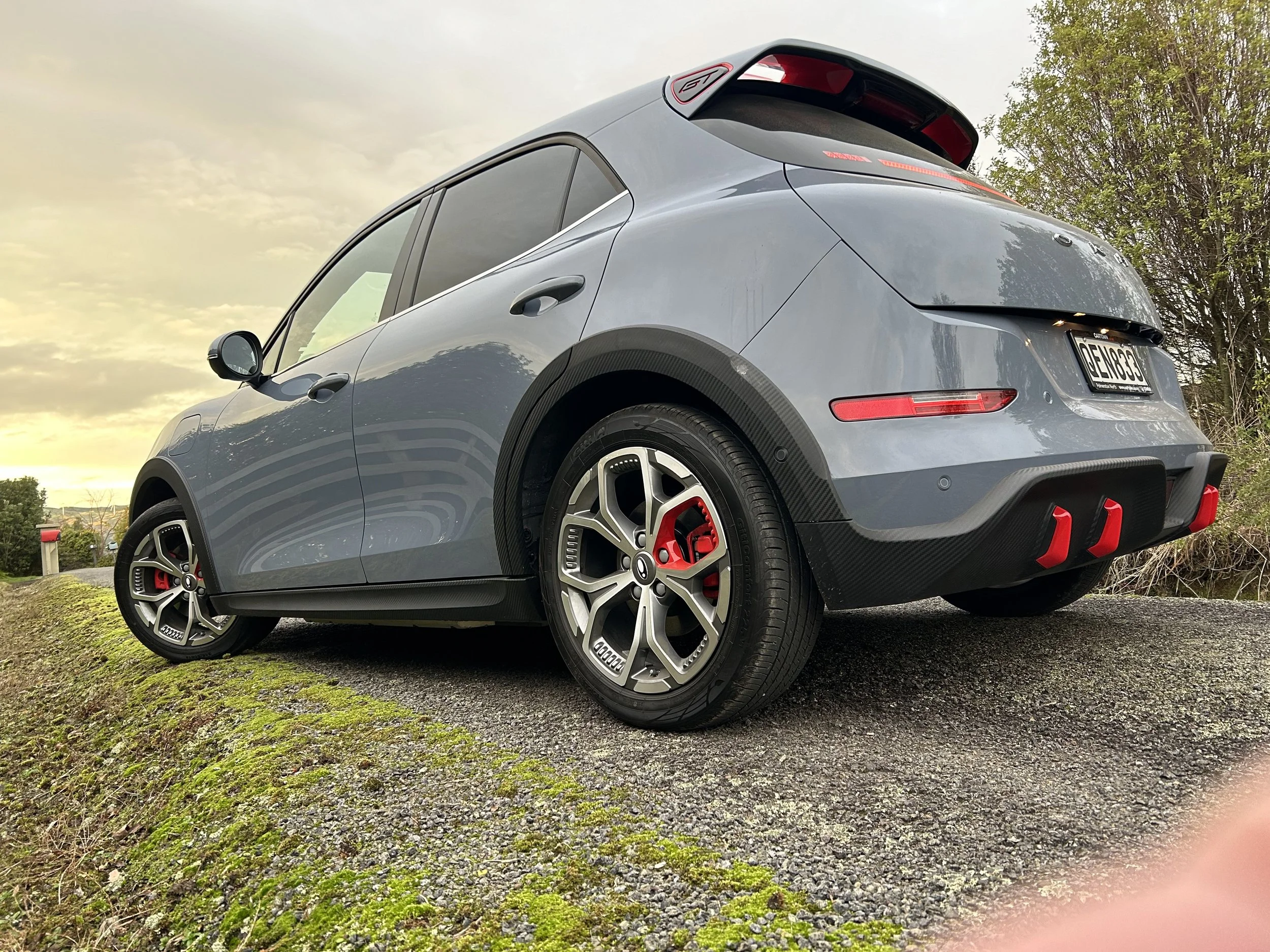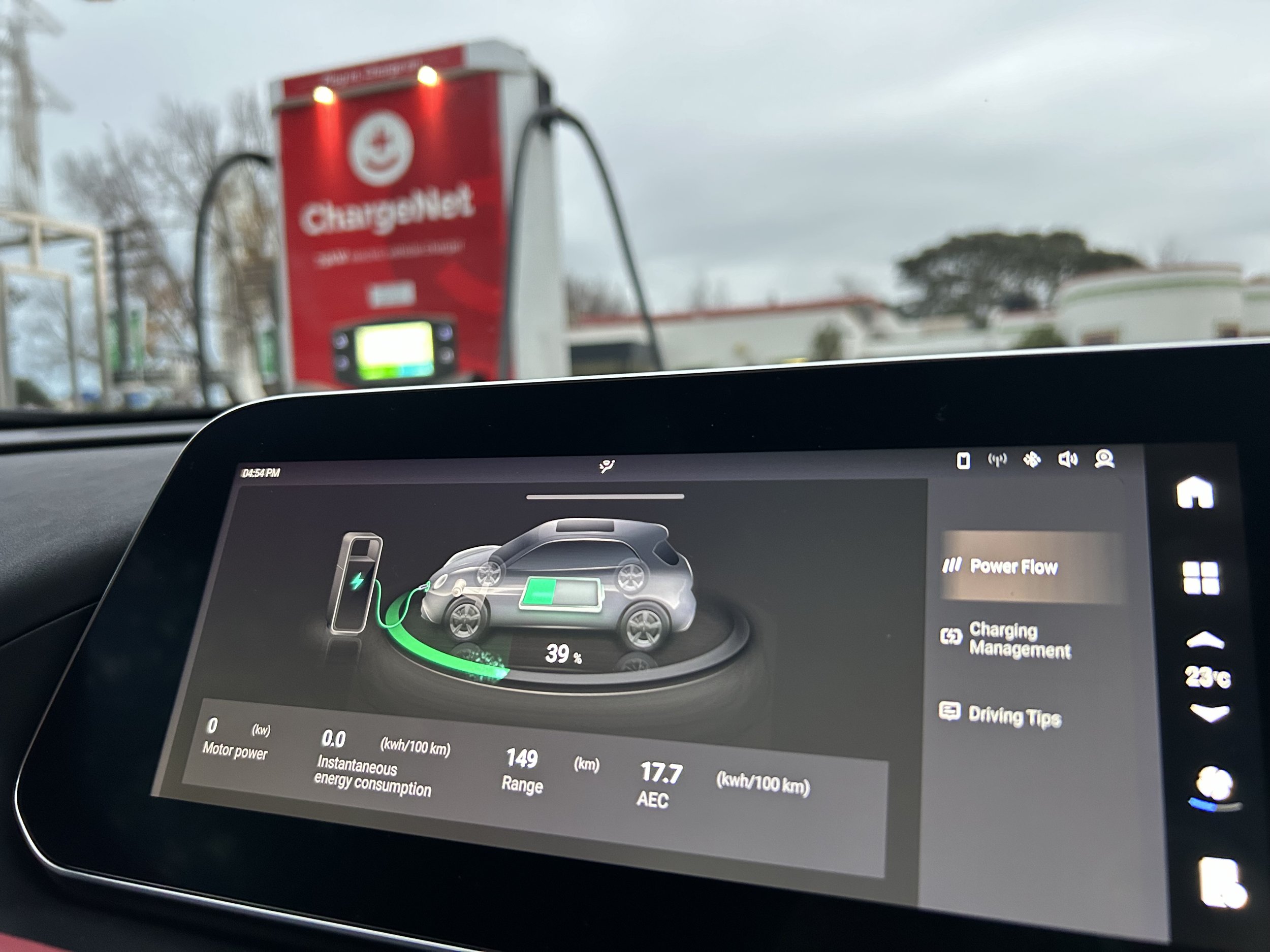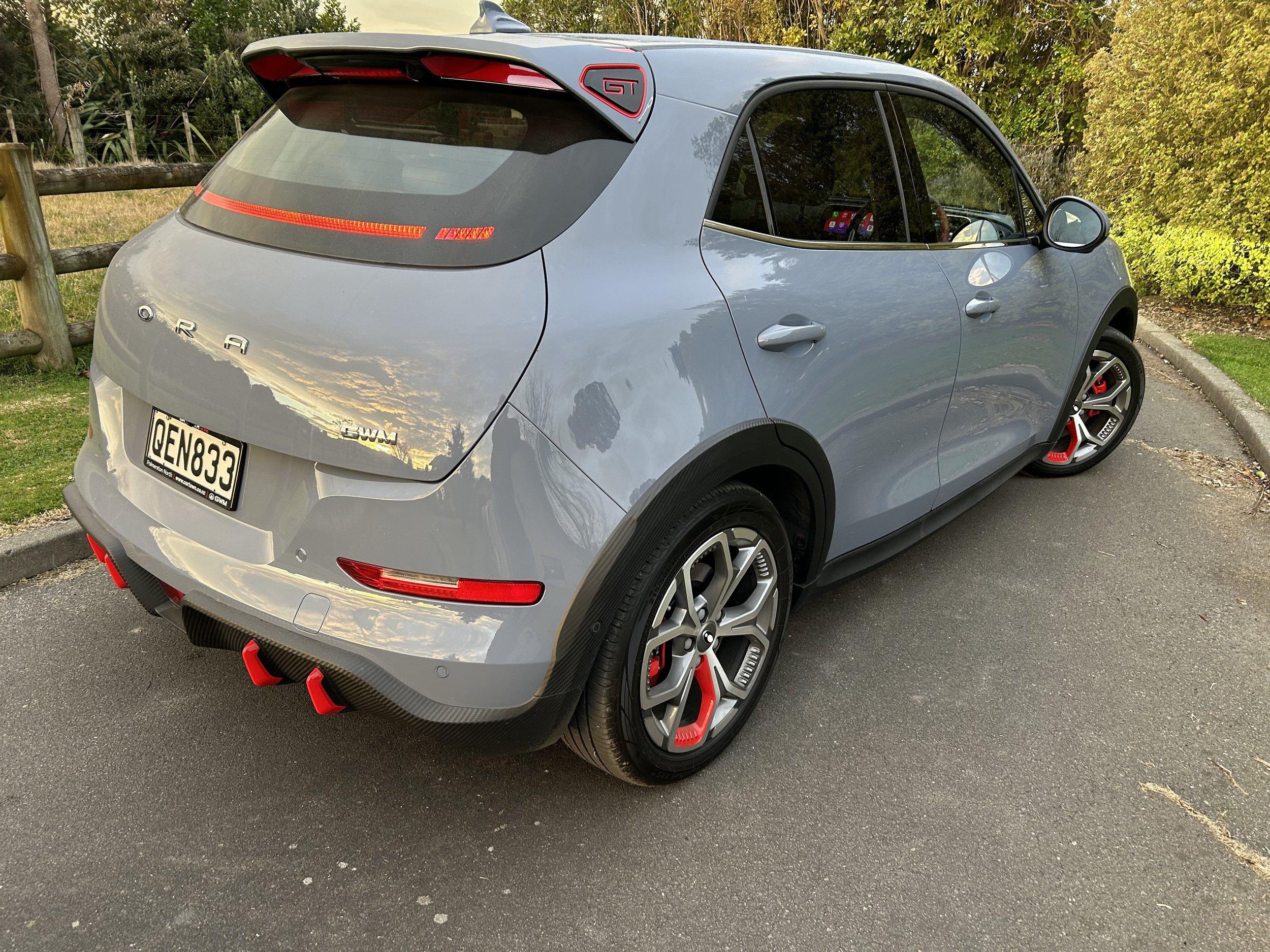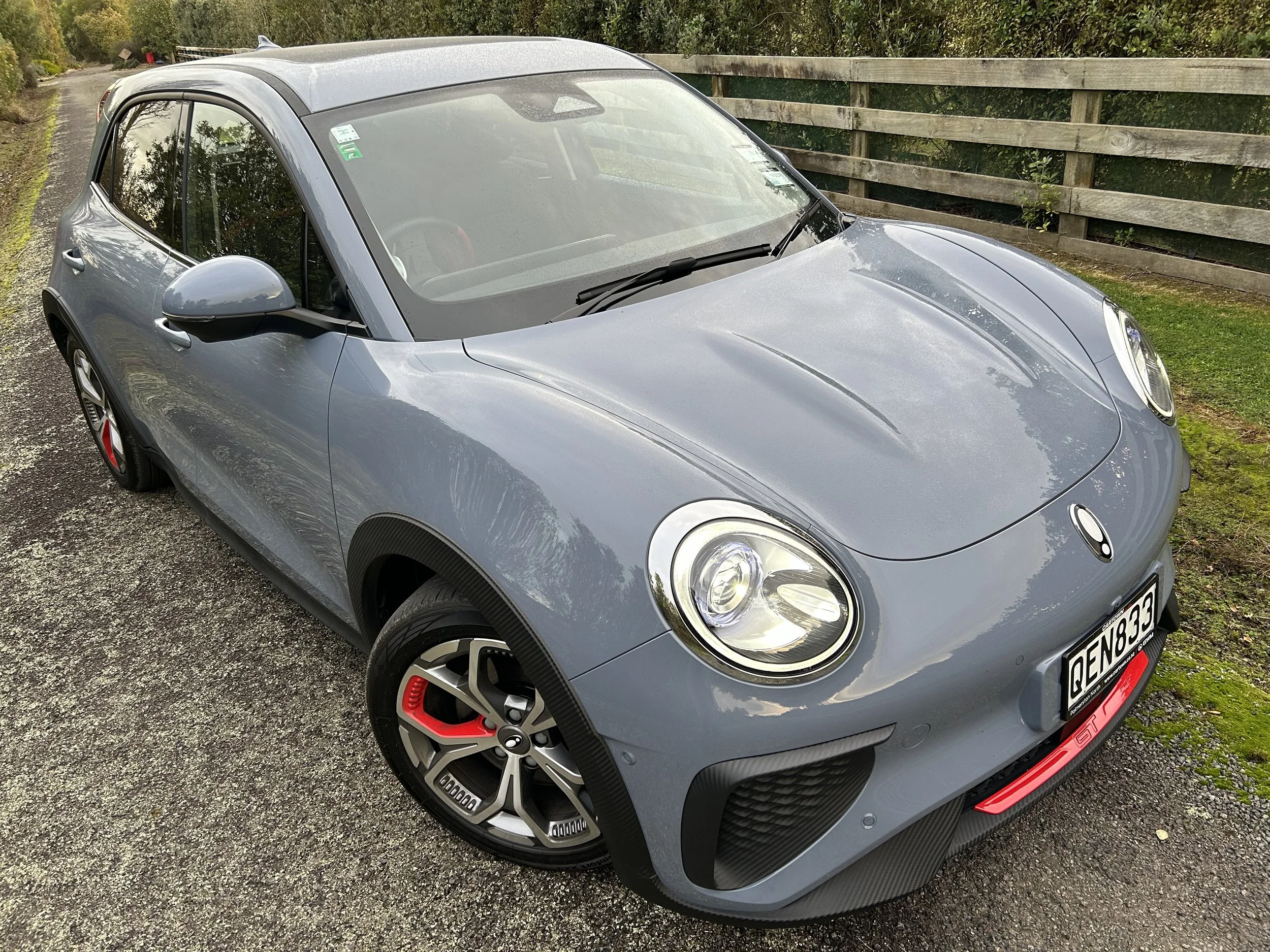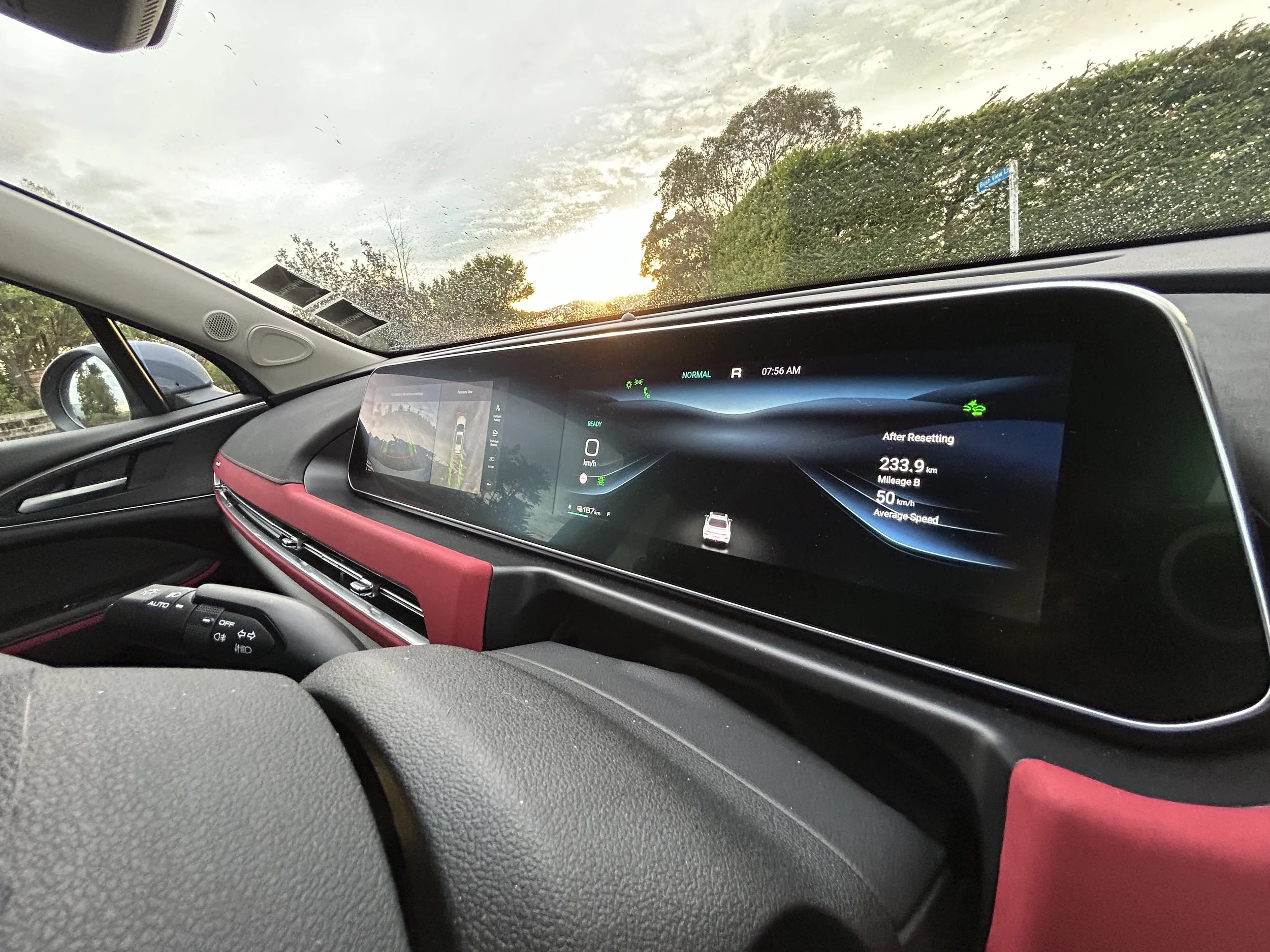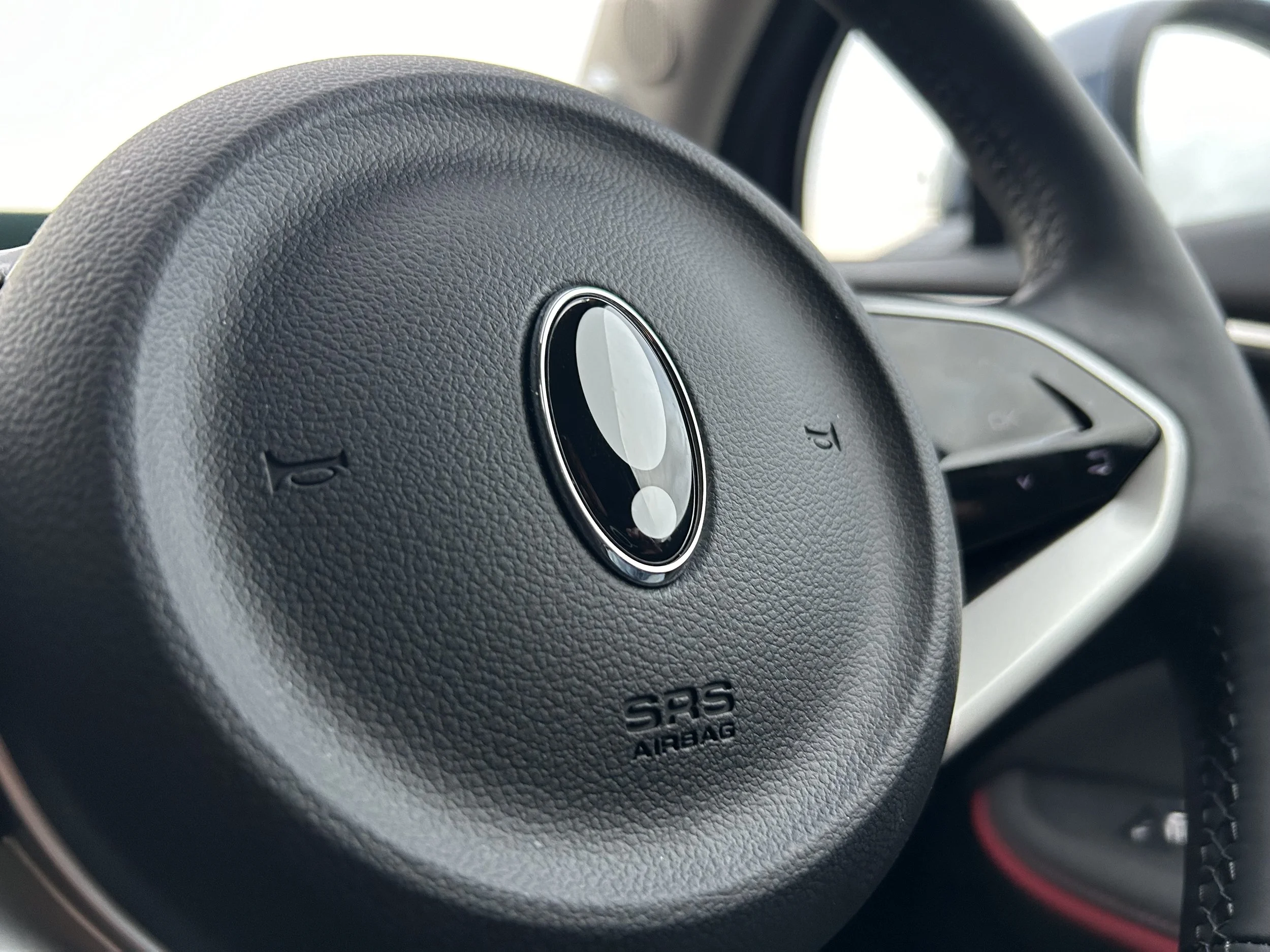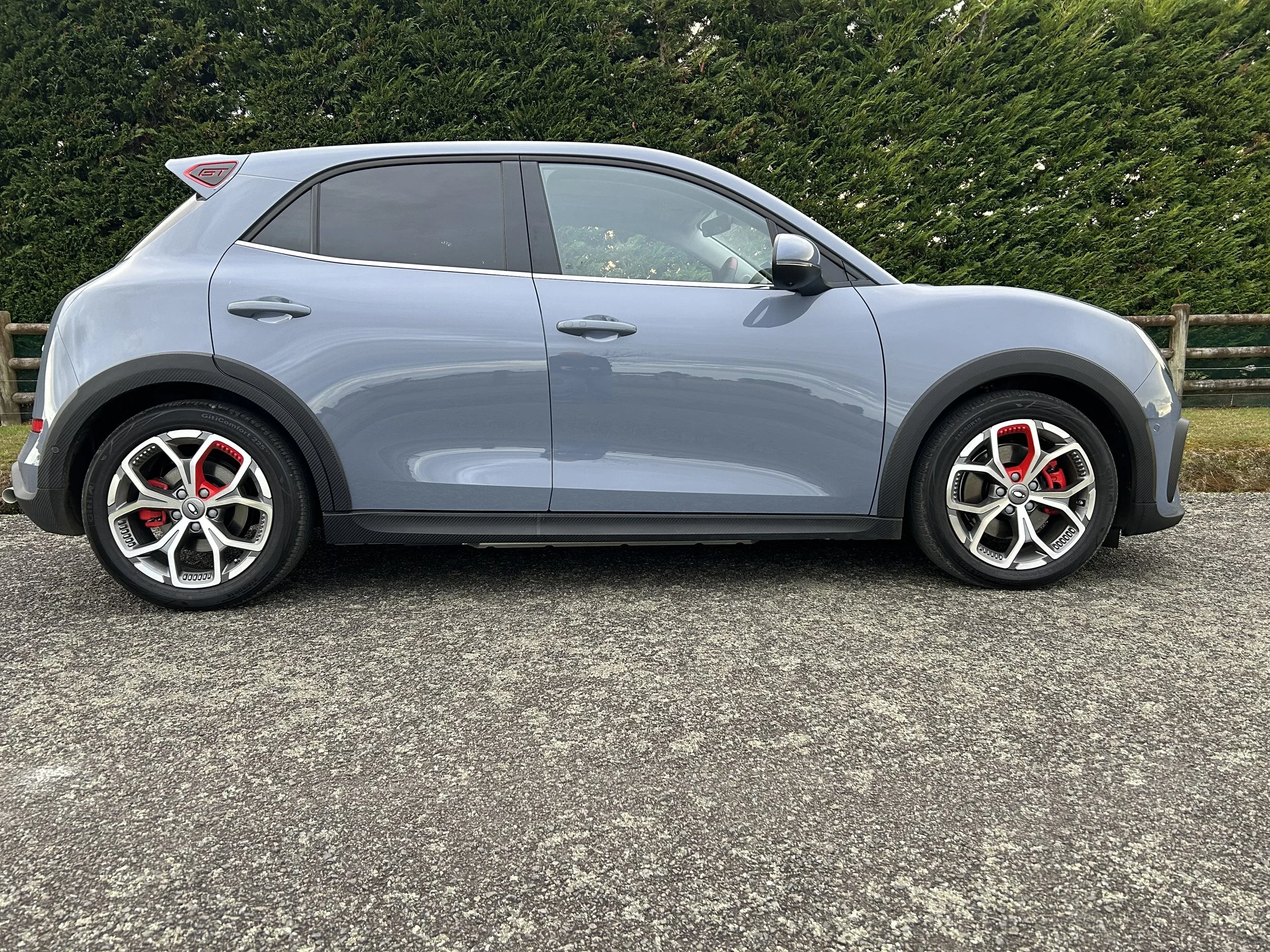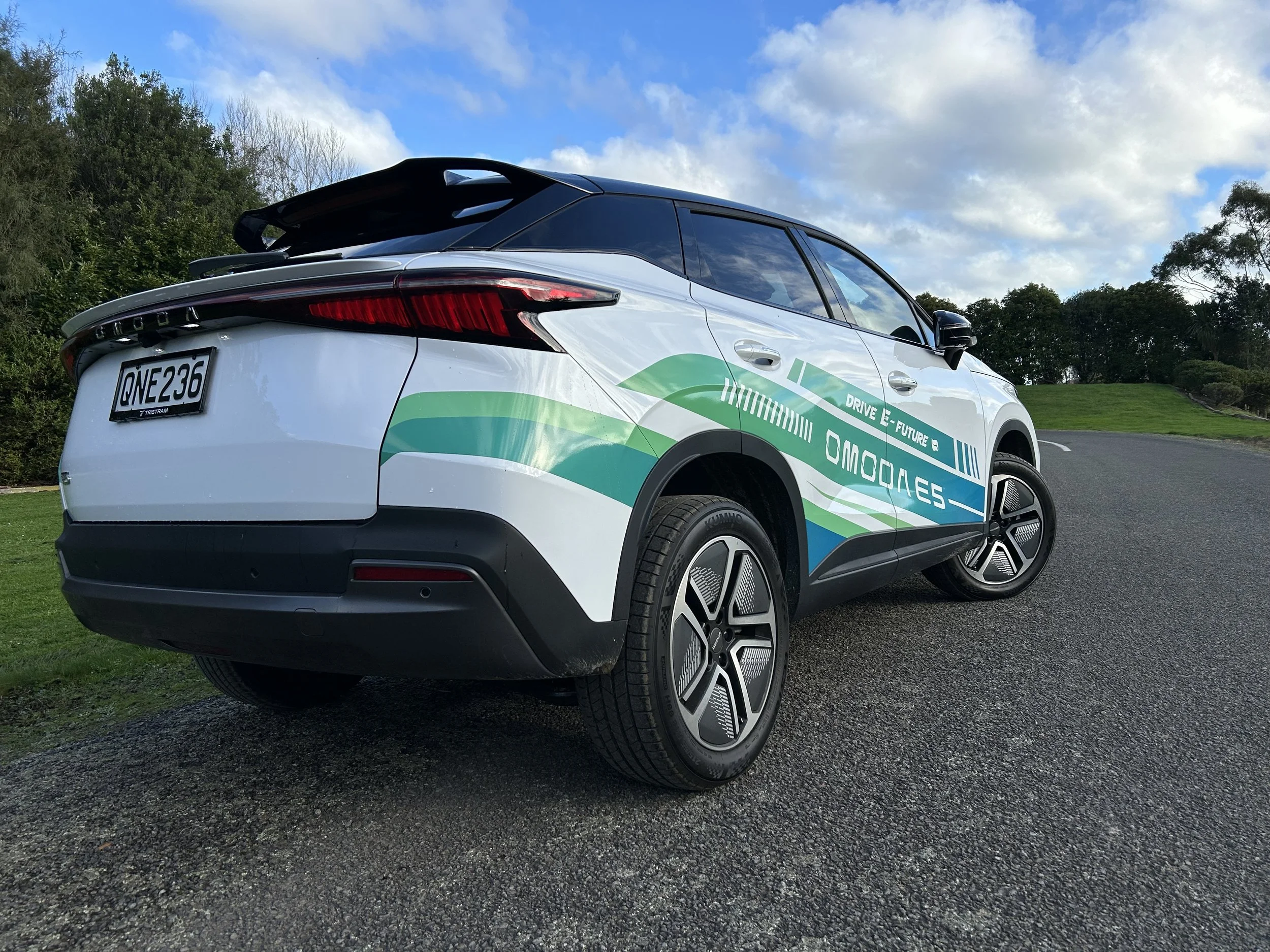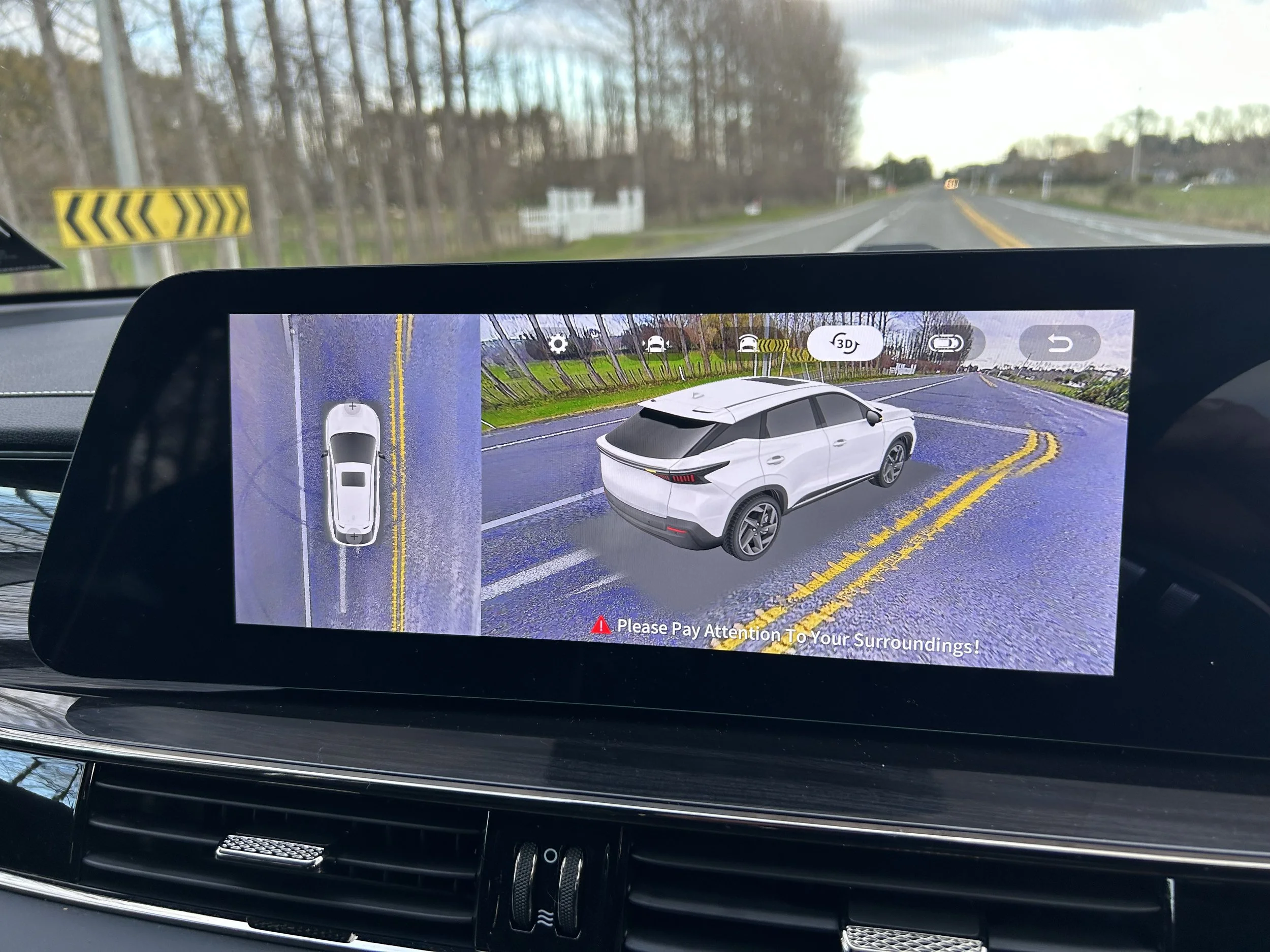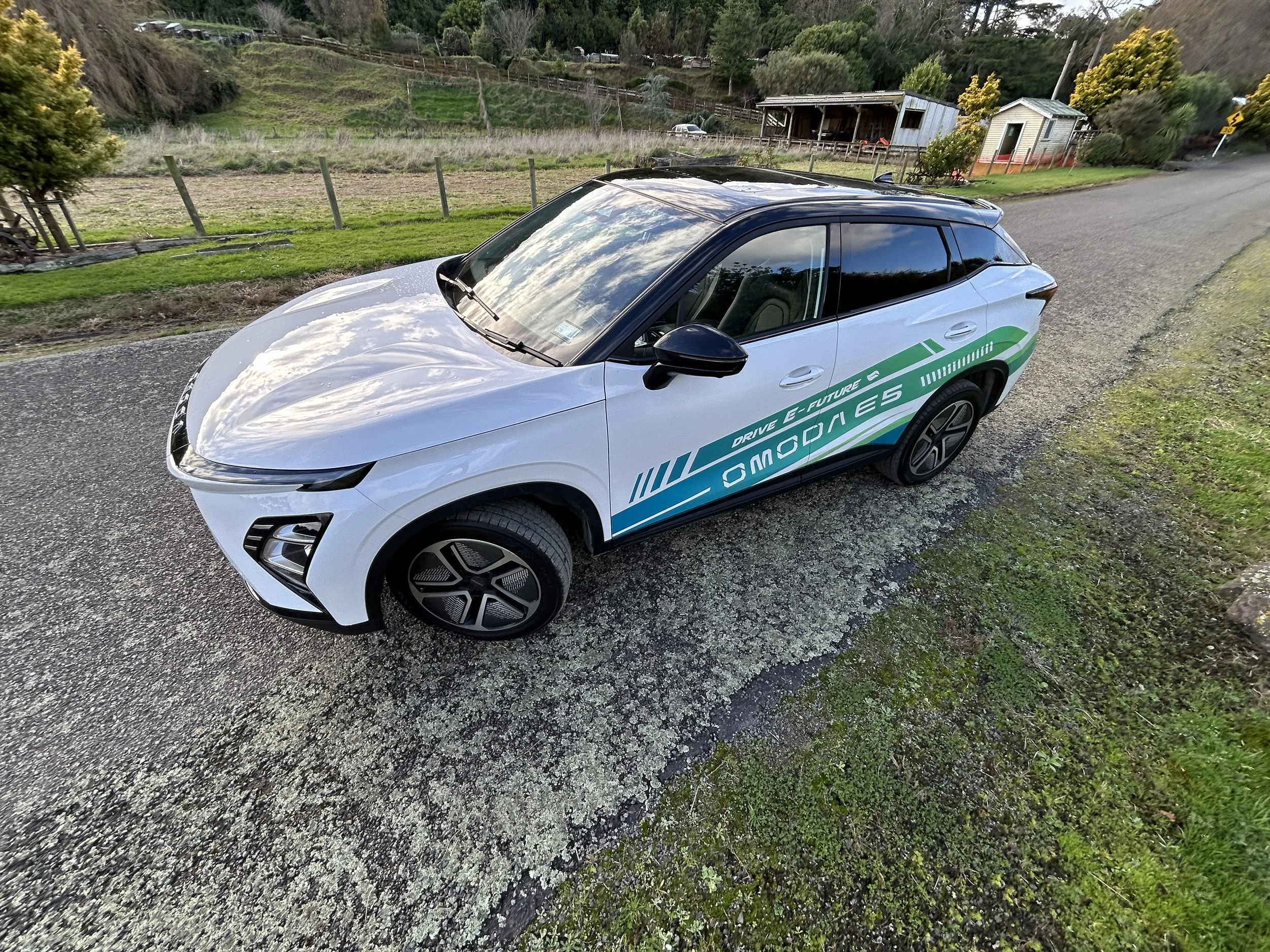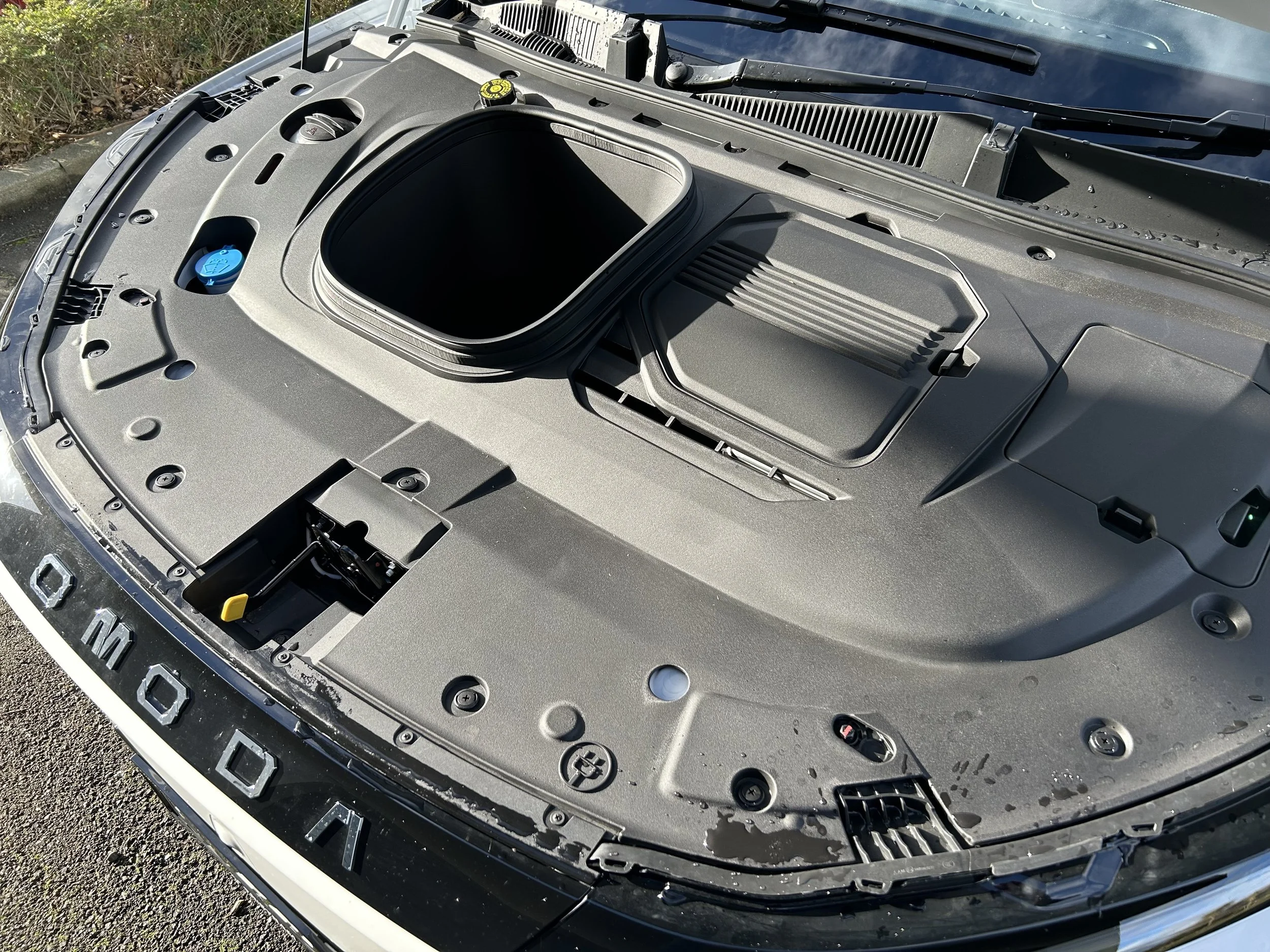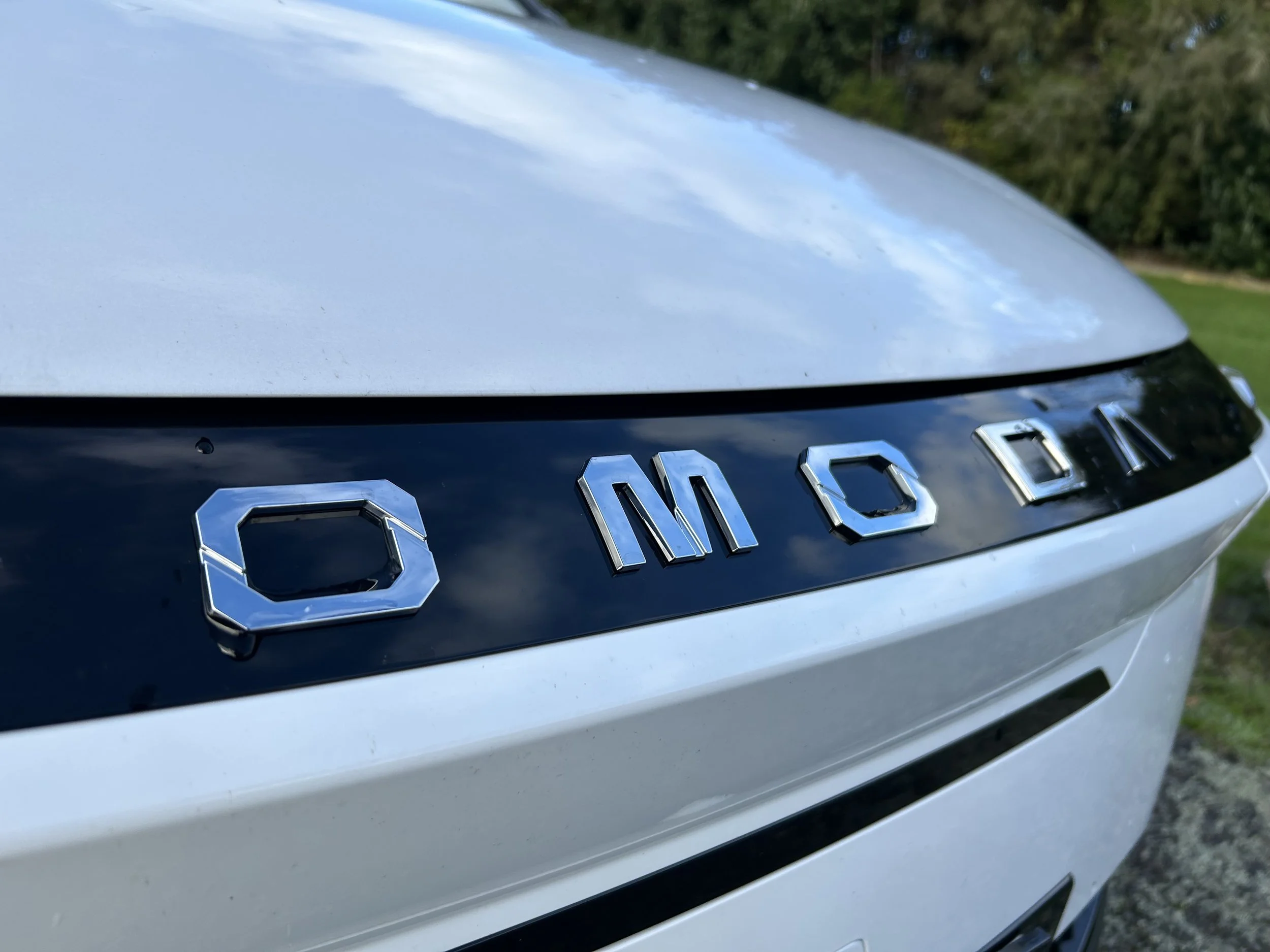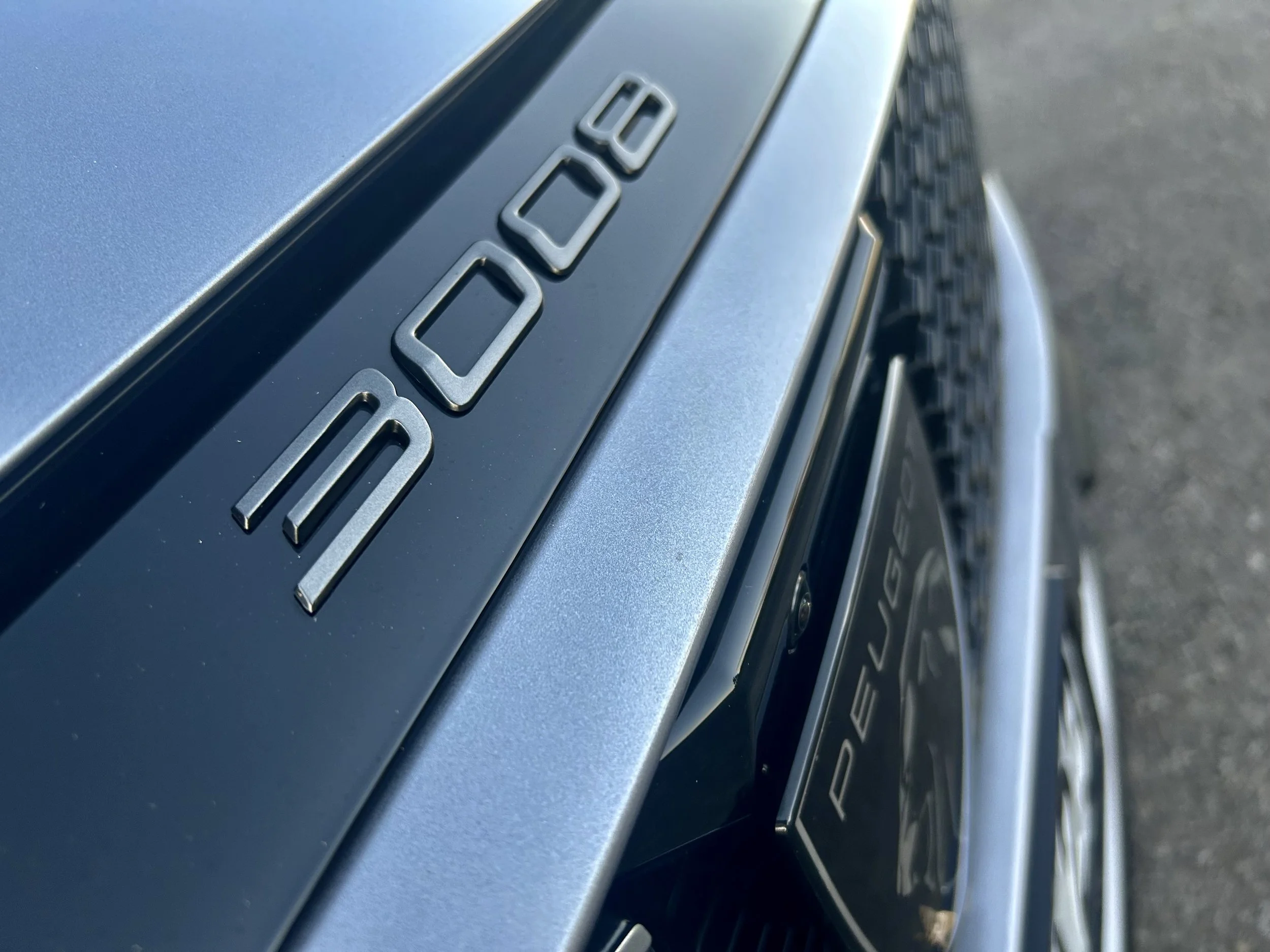GWM Ora GT, Chery Omoda E5 EX roadtest review: Driving ambition
/China has become a juggernaut of the automotive scene and the big name performers are keen to go global. Do they yet have what it takes?
GWM Ora GT
Price: $58,990
Powertrain: Single electric motor, 64kWh lithium ion battery, 126kW/250Nm.
How big: 4254mm long, 1848mm wide, 1596mm tall.
We like: Goes for youth appeal; well-provisioned.
Not so much: GT on a go-slow; poorly shaped front seats; infuriating lane keep.
Omoda E5 EX
Price: $54,990
Powertrain: Single electric motor, 61kWh LFP battery, 150kW/340Nm.
How big: Length, 4424mm; width, 1830mm; height, 1588mm.
We like: A step above petrol editions; spacious cabin; refined.
Not so much: Fussy screen interface; DMS annoyances.
EVERYONE now understands China is a huge market, but even as the world’s largest and fastest-growing, it’s just not big enough for their home-born makers.
Which is why the big name operators among this country’s 137 established brands, most total unknowns outside of their own turf, hitting the international scene.
Products coming here now uniformly seem eye-catching and technologically impressive. Cheap and accessible, with the unique selling point of offering lots of gear for less outlay than the competition.
We’re not just seeing new cars, but new badges as well. The Omoda E5 and GWM Ora GT on test this week being good examples.
Omoda didn’t even exist until a couple of years ago; E5 production began reasonably recently. GWM is one of the old hands in China, yet it only dates back to 1984. Ora was born in 2018.
They’re impatient to win your attention. Car makers in Japan, South Korea, North America and Europe need five years or more to develop from the drawing board to the street. In China, some makes get it done in 19 months.
Too hasty? It’s still fair to say neither of these cars are outright driver-pleasers; they offer comfort ahead of poise. Plus, as much as both do their users proud with technology provision, not least in respect to safety assistance fare, on this drive neither escaped what seems to be a common glitch with China domestic product; erratic driver assist monitoring.
Fulsome driver assist arsenals are necessary to secure strong independent crash test results and the tech is proven to be a life-saver, but tuning is a fine art and, from the aberrant way these cars behaved, both brands could put more work into it.
The Ora’s lane wandering alert was nuts; you could steer it across lines without any reaction and yet, when driven on straight road with plenty of room between markings, it would randomly flip out.
With the E5, the traffic detection was bordering on woeful. Braking triggered in situations when there seemed no logical reason for it doing so.
Still, they’ll improve, because there’s no turning back. No part of China’s car industry is working harder to impress than its electric car sector. China has 464 million motorists and Government degree is for them to go electric ASAP; such is the urgency to reducing crippling air quality issues.
Ten million EVs will be sold in China in 2024; that’s 100 times the total NZ electric fleet size but a target easily met by an industry that churned out most of the 25 million cars sold in China last year and has a total capacity to make 40 million cars a year. Which is half the world’s total potential annual count.
Chinese EV exports grew 70 percent between 2022 and 2023 and while some say China’s extensive subsidies and non market practices have led to substantial risks of overcapacity, those same elements - and its control of up to 80 percent of certain elements of the EV component supply chain - might well lend it a winning edge.
So to the cars …
GWM Ora GT
Memorable names are always a bonus with new products and, on top of that, China’s car makers are developing a tendency for the unconventional.
That vibe is well squeezed by the car here. Ora names after Leonhard Euler, a 17th century Swiss mathematician and physicist considered one of the founders of pure mathematics. All very grown up.
And yet, clearly, the car itself is playing for fun. True, you can see why there’s not a lot being said about the innovative platform’s name - ‘Lemon’ could be so easily misconstrued - but the make u-turning for export using the cat-based names (because felines are considered lucky) it gets in China is a bit of a shame, given the proposed youth audience. Surely some young Kiwis would love this car as Lucky or Funky Cat?
Mind, you, that feline thing might seem confusing given the car’s design also has fish influences; most obviously with the screen graphics showing languidly swimming carp at start-up but also, if you look closely, with little elements of fish scales cheekily inserted around the bodywork.
So Chinese, right? Erm, don’t be so quick to judge. Actually, the Ora was shaped by a studio GWM has established in Yokohama, Japan, and you could propose it delivers a shape that has a Manga cartoon chumminess to it.
Some of what it delivers seems familiar. Not least around the front. You could argue that the design team were extremely influenced by a certain small British icon whose Swinging Sixties vibe has been kept in good health by BMW.
Around the back? That’s definitely different and arguably the most interesting part. Instead of traditional taillights, it has a lightbar incorporated into the rear window as well as two thin horizontal lights/reflectors on the bumper. There is also a light towards the base of the bumper and a brake light at the top of the rear window.
When you seek to size it up, prepare for surprise. Inasmuch as the shaping suggests city nipper, the Ora is bigger than it looks in pictures; not a truly large car, but almost-family-sized and wider than you expect. This translates into acceptable interior space for four adults, slightly cosy for shoulder room but with decent legroom and not too bad for headroom.
The GT name stands tall, but only as an emblem and styling exercise. It is not a fast car by nature; hot hatches won’t be at all worried and, ahem, neither will the Omoda E5 also tested today.
A Grand Tourer, then? Even that one is a bit of a stretch. Here the descriptive is more shorthand for ‘get this’ … as in, ‘look at me.’ Everything is wholly to do with visual enhancement, with some extra gear as well, to justify the $16,000 premium over the base car that presently sites as the country’s cheapest EV, at full RRP. With everyone discounting to get rid of excess stock, it’s a buyer’s market.
But what about the GT as a buy-in? Some differentiation in price is accounted by having the largest of two batteries availed, a 64kWh type availing around 400 kilometres’ driving (against the base car’s 310), yet you nonetheless still get the same basic body shape, same 126kW/250Nm electric motor and same suspension tune as that market lowest derivative that costs $43k.
There’s also a $3000 cheaper that stacks in the same high-end additions of automatic parking with front sensors (rears being standard on everything), power/fold mirrors, panoramic glass roof, power tailgate and power/memory/vented/heated/massage front seats meted the GT. So, really, it’s the latter’s bespoke bumpers, special wheels and generous splashes of red detailing and faux carbon fibre that mainly count as an attraction.
Are they? Well as much as the Mars Red is a very vibrant hue that does contrast nicely with the bespoke Chalk Grey of the test car, it’s personally too powerful a scheme for me in this setting. Different story for a 911 GT3, of course.
But I wouldn’t disagree that the additional detailing seems to lift potential for what is already one of the more conspicuous cars in its category to gain extra attention. That’s not just down to the paint scheme but also that it gets a some attractively-styled alloys and dinky wing over the back window.
Ora has never been shy about dressing up this car’s cabin; the lesser versions also have some interesting colour combos, but these err more toward pastel shades. Here it’s again seen red, and though it is again as a highlight rather than the whole colour, they’ve certainly gone to town with ensuring every opportunity is met. The dash gets a big swipe, the faux leather is held together with red stitches; there are red GT insignias in the seats, but not on the steering wheel boss: That instead is taken by the Ora logo, a stylised exclamation mark.
How this works out in the long-term will be interesting, with ours being an environment in which this hue’s susceptibility to UV degradation has been historically noted.
From the driver’s position there's decent visibility all-round and a wide range of seat and wheel adjustment to get comfortable. The steering wheel is large but with a thin rim that feels good to hold. The seat itself was troubling for my large frame; it’s not too small but did seem rather squishy and lacking form. The seats are heated and cooled, and have a massage feature, which is rare for this price range.
The soft-touch multifunction buttons are of a decent quality, too, while the separate column stalk for the adaptive cruise control means the steering wheel isn't overcrowded with buttons.
Nothing’s too unorthodox on that side. Having driven a few domestic cars from now, I’ve become steeled to something else that seems mandatory for those, even if it is a bit weird for us. It’s the effort put into making the operability a bit of a feat for the ears and eyes.
For instance, entering the cabin is a cue for the dashboard screen to kick into its aquarium mode; a pair of fish - red carp, to be exact - languidly swim across the screens, then vanish into the Ora “exclamation mark” logo.
From thereon, it’s more a sound show. As soon as you drive away at very low speeds, the car plays a science-fiction sound.
After that, you need to contend with potential of hearing bonging from the driver monitoring and the “emergency steering function” - which I assumed is the lane-keeping assistant.
In fairness, the car went through its test without any risk of any kind of ding, let alone a crash And in respect to that, the car looks sturdy, with a five-star ANCAP rating based on testing conducted by Euro NCAP in 2022) so technically that stuff was working.
But still, the DMS agitation alone had me thinking that, had Ora decided to use the feline naming ethos here, they would have been in their rights to call it a Scaredy Cat.
Beyond it being a bit odd in how it seeks to attend to sound out to real or imagined external threats from about other traffic (representations of which display, Tesla-style, on the dash) and road markings, it also as in so many cars now has an internal camera watching for distraction. You only needed to so much as glance in the direction of the touchscreen to risk reprimand.
As hard as that side might be to live with, the car itself is at least well stocked for assists, with autonomous emergency braking, lane-keep assist, lane departure warning, traffic sign recognition, and adaptive cruise control, blind-spot and rear cross-traffic alerts as standard.
Also, it will favour itself by being least dead simple is to drive, being another EV in which simply sitting in it is enough for it to switch on and be ready to be driven. There is no separate “power on” button, simply put your foot on the brake pedal, select a gear using the rotary knob on the centre console and drive. When you egress, you need ensure it is locked, else you might eave it in a live state.
Overall refinement was not too bad. And, though the overall driving experience reinforces that sporty looks and not feel weren’t in any way the remit here, it has a chirpy feel to it. You discover the Giti-branded tyres are limited in their adhesion, but the wide track helps it feel secure in corners and, because the suspension is soft, while it lacks edge to its responses, you get the benefit of good bump absorption and a sense of composure.
There are Normal, Sport and Eco driving modes on offer via a button on the steering wheel, while there's the ability to adjust the strength of the power steering in three steps via a separate control; fussing with those is barely worthwhile, really.
One-pedal driving is available via a sub-menu in the main touchscreen, but how it delivers seems to depend on pace, plus it gets to be a little jerky to use in stop-start traffic, to point you might prefer to modulate throttle and brake in a more traditional way.
Omoda E5
CHICKEN and egg conjecture lays to rest when experiencing this model; in sense that any musing about which had more engineering priority - the cheaper petrol editions or this flagship full electric - is very quickly resolved.
While the fossil fuelled models, badged as C5s, are well-enough sorted, you can tell straight away that the battery-wed E5 type has been the family favourite.
Ostensibly set to rival the likes of the MG4 and BYD Atto3, Omoda’s car straight away shows one clear advantage from being larger than both.
Which might not seem altogether what you want if urban usage is primarily planned- because it does require a touch more parking room and driver dexterity to place in in those spots - but nonetheless will become an attraction when you realise how big it is inside.
Given that the Ora has the benefit of a tall SUV-like roof, the Omoda being still a more spacious car overall might surprise. Sure, it could have been better were rear seat room a bit more sensibly sorted and the boot being a bit modest; moreso than in the petrol kind, because of the need to find space for additional electronics and the addenda that comes with electric driving.
With all seats occupied, it has 64 litres more capacity than the Ora’s 228L; an advantage, yes, but even when taking into account that Chinese cars generally favour passenger space over boot space, it’s not going big for boot space. To be fair, that doesn’t include any storage under the boot floor, where resides a rare sight: A proper spare wheel.
With the electric motor and other drive components underneath the bonnet, it’s surprising to see the mood has a small oddments bucket; hardly a ‘frunk’ but still useful.
Another consideration for this becoming an affordable option for buyers with a tighter budget is the general driving ambience.
Technically speaking, the E5 is a C5 adaption, also a front-wheel drive vehicle with the petrol engine choices being swapped for a 150kW/340Nm traction motor delivering a claimed range of 430km (WLTP), so 30kms more than is cited for the Ora.
Circumstances of the test periods meant neither were subjected to an intensive economy test, over a common route, but in both cases they were replenished before hitting 400kms.
The Omoda’s motor feeds from a 61kW/h lithium-ion battery using electrons at 15.5kW/100km. Like the Ora, it drives via a single-ratio automatic transmission, in this instance controlled by the right-hand stalk on the steering column.
The tech is more up to date than Ora’s and that shows with sense of it delivering pretty decent efficiency. Also, perception is that it steps up with more vibrancy.
Claimed 0-100kmh acceleration is 7.2 seconds, which is more than lively enough. Overall, the powertrain feels pretty useful, perfectly brisk enough to keep pace with traffic. As with the Ora, top speed is constrained to 160kmh.
The battery being lithium ion phosphate means it uses no cobalt and is resistant to deep discharging, and also costs less to make. LFPs hold less energy per unit volume than still common NMC (nickel manganese cobalt).
That volumetric disadvantage is offset by cell-to-pack construction, AKA 'blade battery’, but the rapid charging time isn't great. It accepts a maximum of just 80kW; the oft-cited 28 minute rapid-charge time isn't for 10-80 percent but 30-80, or a mere half the total capacity. The Ora is a slower drinker still; with either you’ll get lots of time for in-depth EV-centric conversations with others stopping by public chargers.
E5’s styling approach seems less likely to spark strong opinion that the Ora’s, or indeed the C5’s; the body’s overall look is modern if a touch reserved, but offloading from the petrols’ grille for a solid nose is a design detail that not only clearly signal its electric adaption but, with some intricate light designs, makes for a smarter looking car. That nose includes the access to the recharge plug. Mounting this at the front in the middle simplifies the recharging process, but the latch itself seems worryingly flimsy.
The interior is an interesting spot, in that Omoda has tried to make the E5 impart sense of it being more premium than its its price tag might suggest.
This EX flagship gets heated seats front and rear, as well as a heated steering wheel, heated windscreen, ambient lighting, and a panoramic sunroof, but it’s a bit a trickster in respect to the inlays that seem to be delivered in nice wood and aluminium are actually rendered in plastic. Also, all that clever detailing is rather copycat. How Hyundai and Mercedes Benz respectively feel about this make using door catches from the first and the window switches and a starter button from the second is not subject to litigation, but it potentially got their legal departments interested.
As per C5, the main instrument display comprises a pair of screens: one for the infotainment system and the other operating as a digital instrument cluster.
I wouldn’t be surprised if Omoda owns up to having increased the processor power for the electric. It had none of the lag experienced in the petrol. The extra functionality for specific electric driving is easily sorted, but overall the screen menus are a bit of weirdness, with hidden icons and menus and toolbars secreted away. Once accustomed to its nuances, you’ll likely be fine, but until then spending a bit of pre-drive time acquainting with the base functionalities would be worthwhile.
As per the petrol, being a taller driver, I wouldn’t have minded the driver’s seat being a bit lower. The minimalist interior suits the electric vibe, though, and what also alleviates it being a pleasant environment is that the mechanical noise intrusion you get in the C5 is, of course, totally absent. Some electric motor whine occurs under acceleration, but that’s about it.
From the box, the E5’s suspension was purportedly tuned for Europe. Another positive sign is that the electric car gets the multi-link rear suspension from the 1.6 GT petrol.
Other dynamic elements would seem to have been carried over from the C5, yet it definitely had improvements in drive feel over the the entry petrol.
The ride is quite mature; maybe a little firm over bumps at low speeds but settling down quite well for open road pace. Like many electrics, it’s quite a relaxing car at a cruise, with only a little wind and road noise penetrating the cabin.
Remember torque steer? It’s pretty much been eradicated from front-drive petrols now but seems to be making a comeback in electrics; no surprise given the loadings and how quickly they can involve. The E5 isn’t a wrist-stretcher, but expect steering wheel twitch under stern throttle loadings. The idea, then, is to be smooth with the power input. Try that and the car feels so much smoother and more accurate.
Summary
With both cars, you get more than you expect but, in respect to driver involvement, less than you might want. if you have care for driving feel, responsiveness and dynamic accuracy, you will find rivals from Europe, South Korea and Japan better furnished. That said, both deliver more ingredients than the obvious competitors from those sources. You can forgive a lot when the price difference is noticeable.

